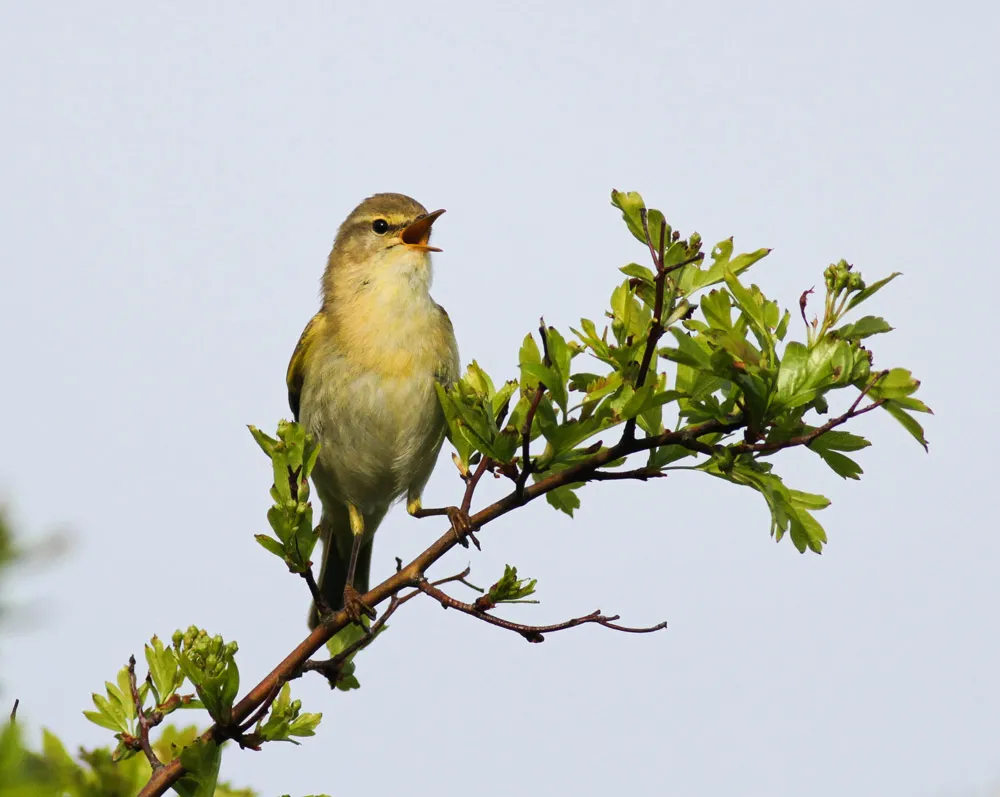Citation

Overview
BTO research has examined the effects of climate change and habitat loss on the population trends of Willow Warbler and Chiffchaff. These closely related songbirds, tricky to distinguish by eye, share breeding grounds across the UK but migrate to different wintering grounds. While Chiffchaffs mainly migrate to south-west Europe and north-west Africa, with a small number remaining in the UK, Willow Warblers head across the Sahara to the humid zone in central Africa.
In more detail
Abstract
Habitat loss and climate change are key drivers of global biodiversity declines but their relative importance is rarely examined. We attempted to attribute spatially divergent population trends of two Afro-Palearctic migrant warbler species, Willow Warbler Phylloscopus trochilus and Common Chiffchaff Phylloscopus collybita, to changes in breeding grounds climate or habitat.
We used bird counts from over 4000 sites across the United Kingdom between 1994 to 2017, monitored as part of the BTO/JNCC/RSPB Breeding Bird Survey. We modelled Willow Warbler and Common Chiffchaff population size and growth in relation to habitat, climate and weather. We then used the abundance model coefficients and observed environmental changes to determine the extent to which spatially varying population trends in England and Scotland were consistent with attribution to climate and habitat changes.
Both species’ population size and growth correlated with habitat, climate and weather on their breeding grounds. Changes in habitat, in particular woodland expansion, could be linked to small population increases for both species in England and Scotland. Both species' populations correlated more strongly with climate than weather, and both had an optimum breeding season temperature: 11°C for Willow Warbler and around 13.5°C for Common Chiffchaff (with marginally different predictions from population size and growth models). Breeding ground temperature increases, therefore, had the potential to have caused some of the observed Willow Warbler declines in England (where the mean breeding season temperature was 12.7°C) and increases in Scotland (mean breeding season temperature was 10.2°C), and some of the differential rates of increase for Common Chiffchaff. However, much of the variation in species’ population abundance and trends were not well predicted by our models, and could be due to other factors, such as species interactions, habitat and climate change in their wintering grounds and on migration.
This study provides evidence that the effect of climate change on a species may vary spatially and may switch from being beneficial to being detrimental if a temperature threshold is exceeded.
The BTO/JNCC/RSPB Breeding Bird Survey is a partnership jointly funded by the BTO, RSPB and JNCC, with fieldwork conducted by volunteers. The research was funded by this BBS partnership. The authors would like to thank all the volunteers who participate in the Breeding Bird Survey.



